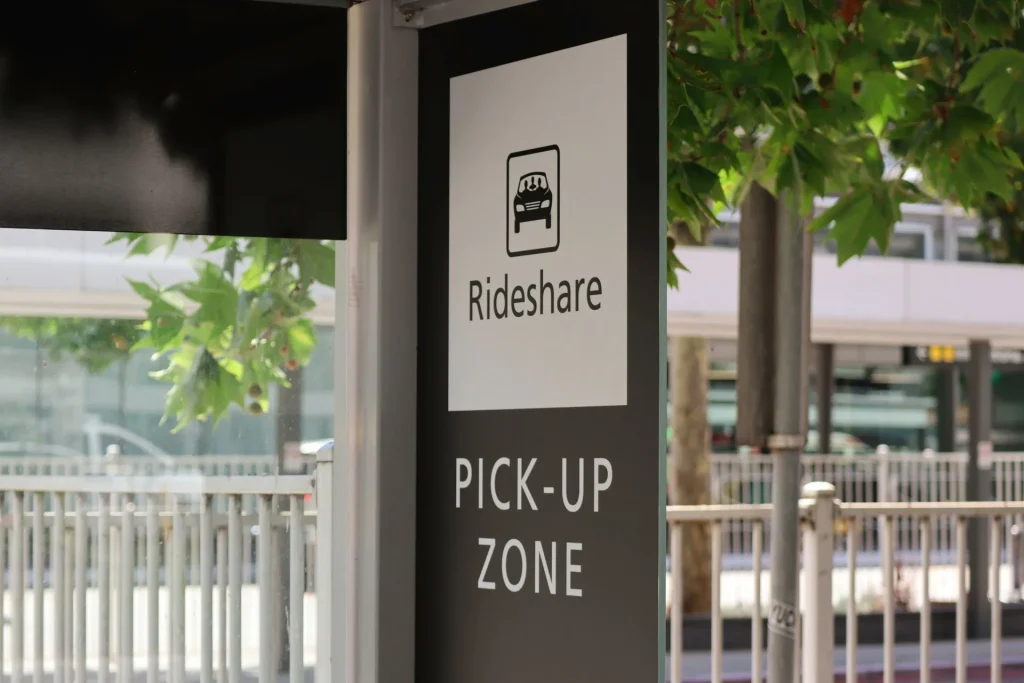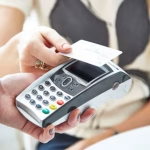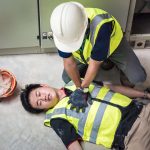Rideshare services like Uber and Lyft have transformed transportation in urban areas, offering convenience for riders and flexibility for drivers. But as more people gather at curbside pickup zones, hotel entrances, apartment buildings, and busy sidewalks, a growing number of slip-and-fall accidents are occurring in these high-traffic areas. Rushing passengers, distracted drivers, wet pavement, and poorly maintained walkways create the perfect conditions for dangerous falls.
For victims left with medical bills, lost wages, and long-term physical pain, determining who is responsible can be challenging. That’s why many turn to the Law Offices of Jay S. Knispel Personal Injury Lawyers to understand how liability works in these complicated, multi-party environments. With rideshare pickup zones becoming more common — and more chaotic — the rise in related slip-and-fall claims is no surprise.
Why Rideshare Pickup Zones Have Become Accident Hotspots
As rideshare apps grow in popularity, curbside pickup zones have evolved into miniature transportation hubs. Unlike traditional taxi stands, these areas weren’t designed for constant foot traffic or large numbers of riders entering and exiting vehicles. Many entrances and sidewalks lack the infrastructure needed to support crowds, leading to hazardous conditions that go unnoticed until someone gets hurt.
Poor lighting, cracked pavement, rain or snow accumulation, and clutter from businesses or construction make these locations especially risky at night or during rush hours. Combined with passengers hurrying to meet their driver or stepping into the roadway without watching their footing, the result is a rise in unexpected and often serious falls.
The Infrastructure Problem Behind Many Rideshare Falls
A major factor in the rise of these accidents is that most urban pickup zones were not created with rideshare use in mind. Small sidewalk spaces that once accommodated occasional foot traffic now handle nearly non-stop arrivals and departures. Constant use accelerates wear on pavement, drains, curbs, and stairways.
Water pooling near curbs, slick metal grates, uneven concrete slabs, and potholes all become more dangerous when traffic increases. When crowding forces riders off sidewalks or into the street, they may encounter unpredictable surfaces or hazards they cannot see in time to avoid.
Weather Conditions Make Pickup Zones Even More Dangerous
Rain, snow, and ice play a significant role in slip-and-fall accidents at rideshare pickup spots. In many cities, these curbside areas are the last to be treated during storms because they fall between the responsibilities of multiple property owners or city departments. Water runoff can freeze near entrances, snow piles create slippery edges, and melting ice can flow into uneven cracks.
If businesses, landlords, or municipalities fail to clear walkways in a timely manner, they may share liability for resulting injuries — especially when pickup zones attract high volumes of foot traffic.
Driver Distractions and Passenger Behavior Also Contribute
Slip-and-fall incidents in pickup zones are not always caused by structural problems alone. Driver and passenger behavior can add to the danger. Many riders focus on their phones as they track their driver’s ETA, losing awareness of wet or uneven surfaces. Drivers may double-park, block pedestrian pathways, or pull over abruptly in places that aren’t designed for loading and unloading.
Busy nighttime locations — such as bars, restaurants, or event venues — increase the risk even more when crowds gather around ride entrances and visibility is limited.
Who Is Liable When a Slip-and-Fall Happens in a Pickup Zone?
Slip-and-fall accidents in rideshare pickup areas can be difficult to sort out because multiple parties may share responsibility. Liability often depends on where the incident occurred and who had control over the walkway or curb at the time. Those who may be held responsible include:
- The property owner or landlord who failed to maintain a safe walkway or neglected hazards such as uneven pavement, spills, or poor lighting.
- Adjacent businesses if their operations contributed to unsafe conditions in the pickup zone.
- Rideshare drivers who parked improperly or created unsafe conditions for passengers entering or exiting the vehicle.
- Municipalities or public entities responsible for maintaining public sidewalks, curbs, or designated pickup areas.
Because pickup zones often involve shared spaces and overlapping responsibilities, determining fault usually requires prompt investigation, photographs or video evidence, and witness statements.
Evidence That Strengthens a Pickup Zone Slip-and-Fall Claim
Strong documentation is crucial in proving fault. Photographs of the hazard, videos showing lighting conditions, incident reports, and medical records all help build a clear picture of what happened. Witness statements from other rideshare users may also support claims, especially if multiple people noticed the same hazardous condition.
In high-traffic areas with security or business surveillance cameras, footage can be invaluable. This evidence helps establish who controlled the hazardous area and whether the condition was present long enough that the responsible party should have addressed it.
Injuries Commonly Seen in Rideshare-Related Falls
Slip-and-fall accidents in curbside pickup zones often result in serious injuries because riders land on hard concrete, metal grates, or uneven pavement. Common injuries include fractured wrists, broken ankles, knee trauma, concussions, herniated discs, and deep bruising. In severe cases, victims may suffer long-term mobility issues or chronic pain that affects their ability to work or perform daily activities.
Recovery may require ongoing physical therapy, medical appointments, medications, and time away from work. These damages make it essential to identify all liable parties to pursue full compensation.
Preventing Future Accidents Requires Better Urban Planning
As rideshare use continues to grow, cities and property owners need to rethink how pickup zones are designed and maintained. Installing better lighting, expanding sidewalk access, improving drainage, and repairing uneven pavement are simple steps that reduce the risk of future accidents. Clear signage and designated loading areas also help keep both drivers and riders safe.
Rideshare companies can contribute by encouraging safer pickup practices, educating drivers on proper stopping locations, and working with cities to identify problem zones.
Protecting Your Rights After a Pickup Zone Slip-and-Fall
Falls that occur in rideshare pickup areas can be physically painful, financially stressful, and legally complex. Understanding who is responsible — and how to prove negligence — is key to recovering compensation for medical bills, lost wages, and long-term suffering.
When cities, property owners, or businesses fail to maintain safe walkways, rideshare passengers shouldn’t have to bear the consequences. With careful documentation and knowledgeable legal support, victims can navigate these emerging accident scenarios and hold negligent parties accountable.







